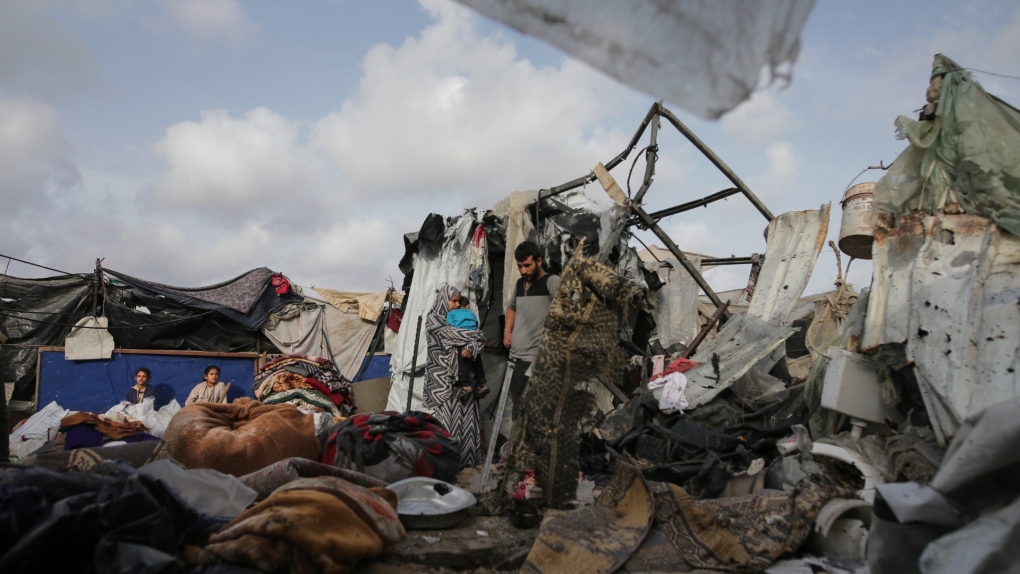Russia's Shiveluch volcano has erupted in the aftermath of a 7.0 magnitude earthquake that struck off the eastern coast of the country, as reported by state-run media outlet TASS. The eruption has led to a column of ash rising up to eight kilometers (five miles) above sea level, accompanied by a flow of lava.
Fortunately, there have been no reports of injuries resulting from the volcanic activity. Located approximately 280 miles from Petropavlovsk-Kamchatsky, a coastal city with a population of roughly 181,000 in Russia's Kamchatka region, the Shiveluch volcano's eruption serves as a stark reminder of the region's geological activity. The earthquake's epicenter was situated around 55 miles from Petropavlovsk-Kamchatsky, with a depth of about 30 miles, as per data from the U.S. Geological Survey (USGS). Despite the seismic event, no significant damage has been reported. However, authorities are now assessing buildings for any potential structural issues, particularly focusing on essential public facilities. While the Russian Emergencies Ministry did not issue a tsunami warning following the earthquake, the U.S. Tsunami Warning System had previously cautioned about the possibility of hazardous tsunami waves within 300 km of the epicenter along Russia's coastlines. As the situation continues to evolve, updates on any developments will be forthcoming. The recent volcanic eruption and earthquake in Russia reinforce the country's vulnerability to natural disasters, highlighting the importance of preparedness and response strategies. The region's unique geological features, characterized by the presence of active volcanoes like Shiveluch, require ongoing monitoring and evaluation to mitigate potential risks to human life and infrastructure. Volcanic eruptions can have wide-ranging impacts, affecting not only local communities but also regional ecosystems and global climate patterns. The release of ash and gases into the atmosphere can contribute to air pollution and disrupt air travel, posing challenges for emergency response teams and residents alike. The eruption of Shiveluch serves as a stark reminder of the unpredictable nature of geological events and the need for robust disaster management protocols. The monitoring of volcanic activity and seismic events plays a crucial role in early warning systems and evacuation efforts. By closely monitoring changes in volcanic behavior and seismic activity, scientists and emergency responders can better anticipate potential hazards and coordinate response efforts effectively. In regions prone to volcanic activity, such as Kamchatka in Russia, these monitoring systems are essential for ensuring the safety and well-being of residents and visitors. In the aftermath of the recent volcanic eruption and earthquake, authorities in Russia are working to assess the extent of the damage and provide support to affected communities. Emergency response teams are on high alert, ready to mobilize resources and respond to any emerging crises. The coordination of local, regional, and national agencies is essential for managing the aftermath of natural disasters and ensuring a swift recovery process. As scientists continue to study the geological processes at work in the region, efforts to enhance monitoring and early warning systems will be critical in mitigating the impact of future volcanic eruptions and earthquakes. By investing in research and technology, countries like Russia can improve their resilience to natural disasters and protect vulnerable populations from harm. Collaboration between government agencies, research institutions, and international partners is essential for addressing the complex challenges posed by geological hazards. In conclusion, the eruption of the Shiveluch volcano in Russia following a powerful earthquake serves as a stark reminder of the region's geological volatility. While no injuries have been reported, the event underscores the need for robust disaster preparedness and response mechanisms. By investing in monitoring systems, research, and preparedness initiatives, countries can enhance their resilience to natural disasters and safeguard their communities from harm. The ongoing monitoring and evaluation of volcanic activity and seismic events are essential for ensuring the safety and well-being of populations living in geologically active regions like Kamchatka.Russia experiences volcanic eruption following 7.0 magnitude earthquake, with ash column reaching heights of 5 miles
 1 month ago
2057
1 month ago
2057
- Homepage
- World News
- Russia experiences volcanic eruption following 7.0 magnitude earthquake, with ash column reaching heights of 5 miles
Related
China Metro Stations Buzz with Personalized Ads as Operators...
1 month ago
2014
Accused Mastermind of 9/11 Attacks, Khalid Sheikh Mohammed, ...
1 month ago
2300
Israeli airstrikes in Gaza near Rafah kill 37 Palestinians, ...
3 months ago
2379
Trending in United States of America
4. NASCAR
10. Nike stock
Popular
Nokia Reaches 5G Patent Agreement with Vivo After Lengthy Le...
7 months ago
26048
Apple's Upcoming Tablet Lineup: iPad Air to Introduce Two Si...
9 months ago
25976
Xiaomi's First Electric Car, the SU7 Sedan, Enters the EV Ma...
8 months ago
25364
The European Parliament's Bold Move to Combat Smartphone Add...
9 months ago
25312
Unveiling ChatGPT's New 'Memory' Feature Revolutionizing Use...
7 months ago
25212
© OriginSources 2024. All rights are reserved








 English (US)
English (US)